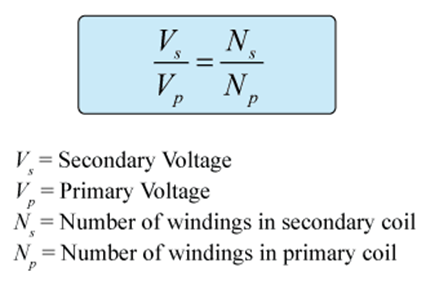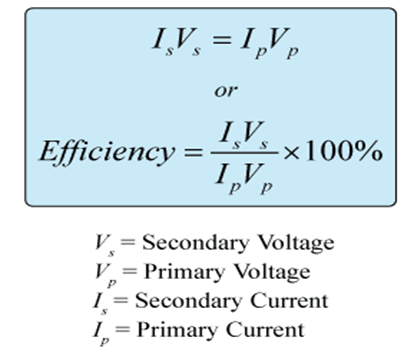Topic outline
ELECTROSTATIC
INTRODUCTION:
When a plastic comb is charged. it remains charged until it is touched by something else. We say that the comb has a stationery electricity or static electricity. In this unit we will discuss static electricity in terms of positive and negative charges. We will also study the properties of static electricity.
In this unit we will discuss static electricity in terms of positive and negative charges. We will also study the properties of static electricity.
By the end of the lesson, learners should be able to:
-describe the origin of charge
-state the two types of charge
-state the law of electrostatics; and the law of conservation of charge
-describe Charging by friction, or conduction.
-describe Charging by induction'
-state the instrument to detect charge
-describe effects, and applications of electrostatics.
Learning Objectives
By the end of this section, you will be able to:
- Describe the concept of electric charge
- Explain qualitatively the force electric charge creates
You are certainly familiar with electronic devices that you activate with the click of a switch, from computers to cell phones to television. And you have certainly seen electricity in a flash of lightning during a heavy thunderstorm. But you have also most likely experienced electrical effects in other ways, maybe without realizing that an electric force was involved. Let’s take a look at some of these activities and see what we can learn from them about electric charges and forces.
At the end of the lesson , you will be able to:
-define electric force
-define electric field
-recall and use Coulomb's Law F = (k|q1q2|)/r2
- recall and formula for Electric field E = F/q2, or E = (k|q1|)/r2.
At the end of the lesson , you will be able to :
-use Coulomb"s law in calculating the force between two or more charges.
Current electricity
In this section we wil be"observing the effect of moving charge in a closed circuit from the positive electrode to the negative.
Now if we create a closed circuit these loose electrons will start to move and drift back to the protons due to their attraction creating a flow of electrons. This flow of electrons is called an electrical current. The electrons do not flow freely through the circuit as the material they move through creates a restriction to the electron flow. This restriction is called resistance.
Then all basic electrical or electronic circuits consist of three separate but very much related electrical quantities called: Voltage, ( v ), Current, ( i ) and Resistance, ( Ω ).
In this unit we will be analyzing the relationship between Voltage V, current I and the resistance.
Which is clearly shown in Ohms' law, which shows that voltage is directly proportional to both the current and the resistance. While the two are inversely proportional. V α I, V α R and I α 1/R.
What is Electric Potential Difference?
In an electrical circuit, the potential between two points (E) is defined as the amount of work done (W) by an external agent in moving a unit charge (Q) from one point to another.
Mathematically we can say that,
E = W/Q
Electric potential energy is defined as the total potential energy a unit charge will possess if located at any point in the outer space.
In this lesson , we are going to look at another configuration where resistors are connected in Parallel.
In this lesson we are going to look at ;
- the equations applied in a parallel circuit calculations.
- how to use Ohms law, to calculate current , voltage and resistance
How to tackle a combined circuit of resistors connected in series and Parallel.
In this lesson , we are going to dfine Power and electrical energy
- Use a formula P= Vx I in calculations
-Use a formula P =E/t in calculation
-Derive formulas of Power such as P = I2R
-Calculate electrical energy dissipated by an electrical appliance in KWh.
- Cost electricity
In this lesson, we are going to look at
-Kirchhoff's Current Law
-Kirchhoff's Voltage Law or Kirchhoff's Loop Law.
At the end of the lesson you will be able to:
- define resistance
-mention 3 factors affecting resistance
- Use and calculate Resistance from a formula V = I x R in equations.
-define Resistivity.
-measure resistance from a cicuit or a graph
At the end of the lesson, you will be able to :
- define short circuit
- relate how short ciurcuit may cause wires to overheat and start a fire.
- State several safety features built into modern electric circuits and devices.
- Follow safety rules that can reduce the risk of injury or fire from electricity.
This is a 30 minutes quiz , that will be written on the 27th September 2022 at 8:10 am.
I t will start a 9.30 am on the 27th /09/22
This quiz starts at 17 : 45 pm until 17 :30 pm on the 16 /11/21.
You have 1 day to do this quiz.
You can submit your answer on moodle or your scanned answer through my email address.
pramoshebi@gmail.com
- Other extra sources.
This is question is part of Quiz C2
It starts at 20 hrs, on the 15/11/21. You have a day to submit, either on moodle or through my email address, pramoshebi@gmail.com
ELECTROMAGNETIC INDUCTION
In this section we explore Electromagnetic Induction.
In this lesson we are going to explore electromagnetic Insuction.
In this lesson we will explore how a generator works.
In this lesson you will be able to :
-define mutual induction
-relate how a transformer works
-describe a step down transformer and step up
-Use formulas to calculate power , enegy and number of coils
-mention factors affecting power
-describe power losses in transformer, and how to reduce them.
-
In this lesson , we are going to discuss the
1. Construction of the Transformer.
It consists of two inductive coils, namely : primary and a secondary and a laminated steel core.

2. Operational Principle of Transformer:
The varying magnetic field lines from the primary coil, induces current in the secondary coil. as such it transforms voltage.
3. Transformer Turns Ratio and EMF Equation.

In this lesson you will explore an electrical grid.
This quiz will be a 40 minutes, which will start at 11:00 to 11:40 minutes, on the 25th November 2021.
Magnetism
In this section, we are going to learn about:
-Properties of magnets
-Magnetic properties of iron and steel
-Magnetization and demagnetization
-Electromagnetism
-Uses of magnetsIntroduction
Magnetism is the phenomenon due to which certain substances attract pieces of steel, iron, nickel etc.

Magnets are used in many devices like electric bell, telephone, radio, loud speaker, motors, fans, screw drivers, lifting heavy iron loads, super-fast trains especially in foreign coutries, refrigerators etc.
Magnetite is the world’s first magnet. This is also called natural maget. Though magnets occur naturally, we can also impart magnetic property on a substance. It would be an artificial magnet in that case.
History of magnets
As early as 600 BC in Greece, shepherds observed that their wooden shoes which had iron nails struck at some places on the ground.

An island in Greece called magnesia has magnetic ore deposits. The word magnet is derived from here.
The technological use of magnet at around 400 BC by Chinese was remarkable. A thin piece of magnet when suspended freely always points towards North-South direction. This fact was utilised by a Chinese emperor Huang-ti to win a war.
Magnetic field lines are imaginary lines of magnetic field inside and around the magnet.
The main idea of magnetization is to cause the magnetic domain to point in one direction.
Method of Magnetisation by i) Single Stroking
What is a magnet made up of.
How does it affect magnetic objects.
Types of magnetic material
The main idea of demagnetization is to cause the magnetic domain to point in random directions.
We discuss:
3 methods of demagnetization
Right hand Grip Rule
Current carrying loop